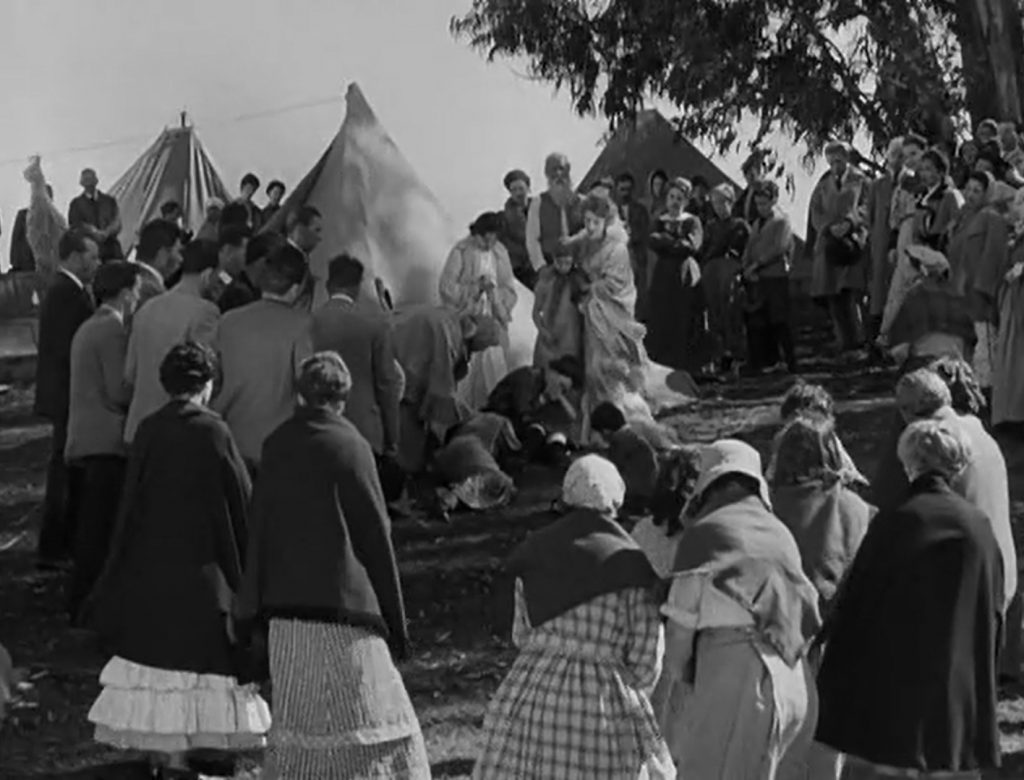The movie “San Francisco” is considered the first real Disaster Movie out of Hollywood. The film premiered in 1936, exactly 30 years after the San Francisco earthquake, one of the most severe and best known natural disasters of the 20. Century. Surprisingly, for 90 out of it’s 115 minutes the movie is about love, sin, class, friendship, lots of music, the opera and the notorious night life of San Francisco’s Barbary Coast, but not about any natural disasters. The earth quake comes at a point in the film’s dramaturgy when all conflicts have been solved seemingly. The disaster here has only one dramaturgical function – to lead the main character towards a religious epiphany and make him accept the Christian faith.
The moment of reunification between the main male and female characters after the earth quake is set in a biblical scenery, modeled after classic nativity paintings:

The heroine, aptly named Mary, is standing up on a hill and surrounded by worshippers and tents, below her crouches a woman holding a child on her knees.
Watching the film now with a distance of 90 years, I assume that film makers at the time did not believe, that audiences could possibly be entertained by a natural disaster and it’s aftermaths. Rather they chose to focus on popular topics like innocent love, debauchery and – above all – musical performances. This formula was kept up in Hollywood until the 1970s, movies like Atlantis: The Lost Continent (1961) or Krakatoa – East of Java (1968) are still basically love stories with disasters happening only towards the very end. This changed with movies like Airport (1970), The Poseidon Adventure (1972) and later Earthquake (1974) and The Towering Inferno (1974).
Despite the fact that the movie is not really about it, there is a great earth quake sequence. Obviously strongly influenced by Eisenstein’s Battleship Potemkin from 1925 (note the prominently staged cart wheel, a direct reference to the baby carriage in Eisentstein’s famous staircase scene) and the expressionistic film style, the sequence uses contrasting perspectives, sudden movements, close ups and fast editing to create a highly effective and intense moment.
Not only did the movie make little time for the earth quake itself and it’s disastrous effects, it also moves with an astonishing pace from destruction to resurrection. Immediately after the main characters are reunited among a crowd of displaced people, the crowd marches back in to the still smoldering city to rebuild.
Music, which plays a central role throughout the whole movie, also play a central role in the final scenes. It is as if, music is what effectively held the population together before and during the disaster. This is the final scene with a cross fade from the ruins to the new skyline of 1936 San Francisco.
The whole movie can be watched here.